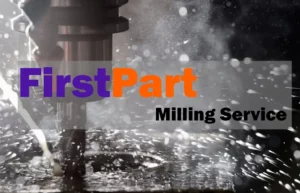Unlike subtractive manufacturing techniques, 3D printing builds prototypes and parts from the ground up. Because of this, there is an inarguable need to start the print or build on strong platform. The first layer of a 3D print can make or break the project. As the bedrock for which the other layers are laid to make the final part, getting it wrong can lead to print failure, geometry inaccuracy or structural flaws in the finished part.
One of the most common culprits for poor first layers lies in the inability to get the part to stick to the print bed. Other reasons include print speed and temperature parameters. In today’s article, we take a look at 6 simple but very effective ways to ensure that you make great parts with the perfect first layer every time you print.

1. Start with a flat bed
If you’re going to have any success nailing your first layer, the first thing you need to take care of is your bed. An uneven print bed, build platform or build surface will all but make your print stick. This is because during the print, the action of the nozzle across the entire bed will be inconsistent. At some points, the nozzle will be too close to the bed, and in some instances, too far from the bed.
Even and level beds can still lead to bad first layers when they have not been properly set relative to the nozzle distance. The solution to mitigating print bed challenges is to first ensure that the bed itself is level. In addition, ensure that you adhere to your printer bed-leveling procedures and position your bed at the ideal distance from the printer nozzle.


2. Clean your build surface
Another simple solution for ensuring a perfect layer may lie in a bottle of alcohol. If your print bed or build surface is unclean, your first layer may have problems adhering to its surface because of the presence of dust, grease or oil debris.
If you have your prints constantly sliding off during production, gently wipe your build surface with some isopropyl alcohol to clean it up.

3. Slow down layer speed
Another way to improve the chances of a 3D print is to slow down the first layer speed. We recommend doing this to an extent of 30 to 50 percent decrease in the print speed of the first layer. The effect of this is that your extruded plastic has a better chance and time to bond to the print bed. While you may be concerned about the overall cycle time of your print job, this strategy only requires the decrease in the layer speed for the first layer. Once your first layer is a success, you can revert to your original layer print speed.

4. Temperature control is important
Temperature control is particularly crucial to the success of 3D prints because of the nature of the filaments involved. If you encounter challenges where your first layer adheres to the bed, but later separates, the problem is likely temperature parameters.
Printing in conditions where the print bed is not warm enough can cause a differential between the first layer and the print bed that consequently causes the print to slide off. If your print bed is a heated platform, gradually increase the temperature of the print bed by 4 to 5 degrees until you can achieve the perfect first layer. The information you require about the filament type and recommended temperature range for extruder and bed is likely to be present in the manual.

5. Consider adhesives
Certain print filaments will have higher affinity for certain print bed materials, and adhere better to them than other print beds. If this is the case with your print, you can consider the use of adhesives to augment the chances of nailing your first layer. Some popular options include hairspray, glue sticks and painter’s tapes.

6. Use rafts and brims
If you’ve tried all of the above and still encounter problems with your print, you may need to look to raft, brims and skirts to improve the outcome of your print layers. All 3 options are used to help with warping and bed adhesion.
To access raft, brims or skirts, explore your printing software and choose any of these features you’re most comfortable with. Here’s a brief summary of what each feature is about:
i. Rafts
Horizontal latticework made from your filament and printed below the part to create the foundation for which the upper layers of your part will lay.
ii. Brims
A type of skirt attached to the edges of your print model. It aids bed adhesion and prevents warping. Brims work by holding down the edges of the part when the layer is being printed to prevent failures or slide-offs.
iii. Skirts
Skirts are outline that are printed around the part but do not come in contact with it. They are extruded on the part before the model is printed, and helps to prime the extruder for smooth flow of filament during printing.
Skirts, rafts or brims represent temporary add-ons aimed and ensuring the smooth print and success of the first layer. They are easily discarded after the print has completed.
Firstpart 3D Printing Services
Don’t own or can’t get a 3D printer? Come to Firstpart! If you’re looking to make high-quality 3D printed prototypes for a wide variety of applications. Firstpart is your one-stop-shop outsource manufacturers in China. Our industrial 3D printers are capable of making 3D parts with complex geometries at cost-effective rates. We also offer multiple post-printing solutions to help finish your parts, while our other manufacturing solutions like Plastic injection molding and CNC machine service is readily available to help upscale your project to mass production.










